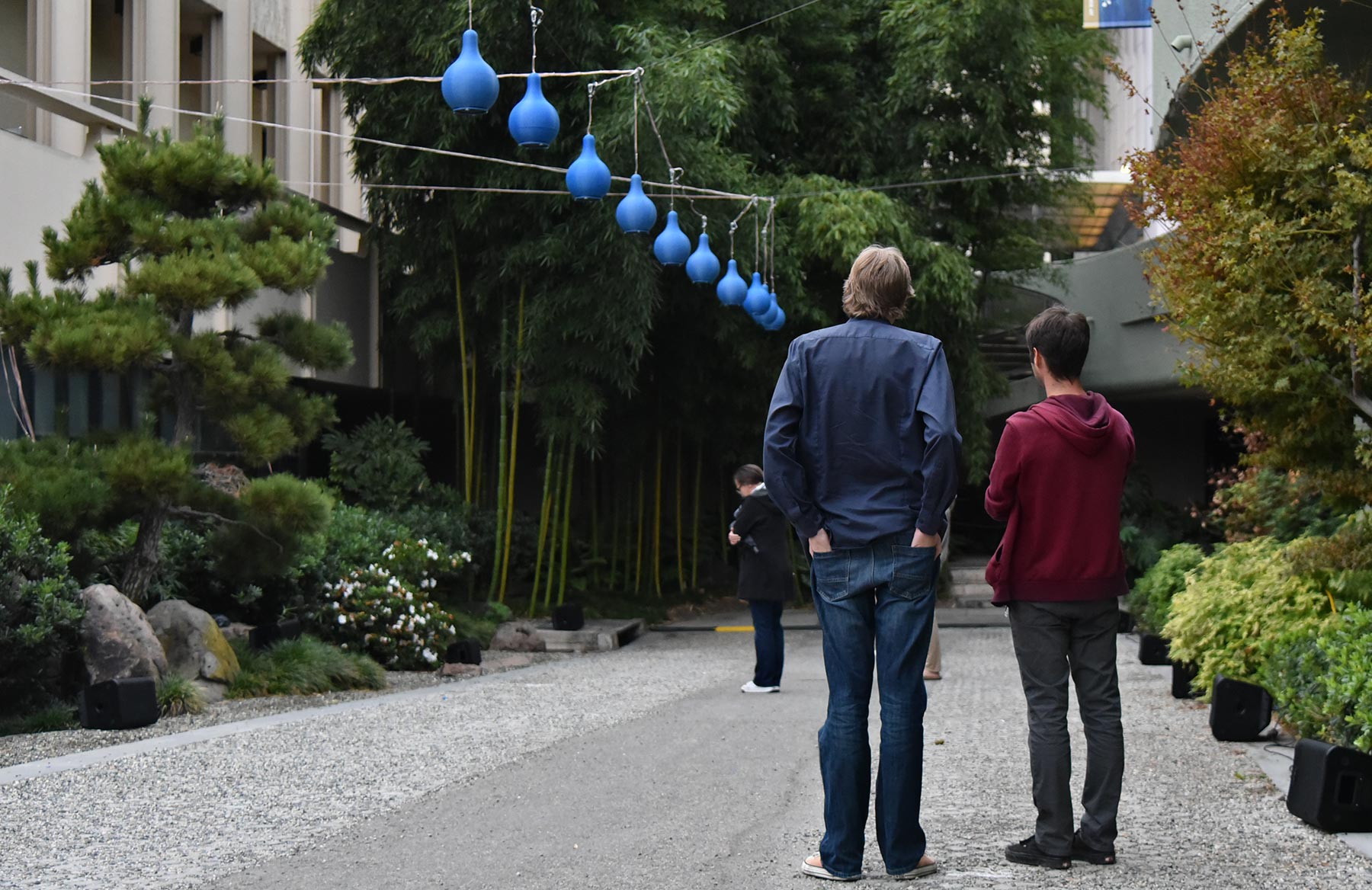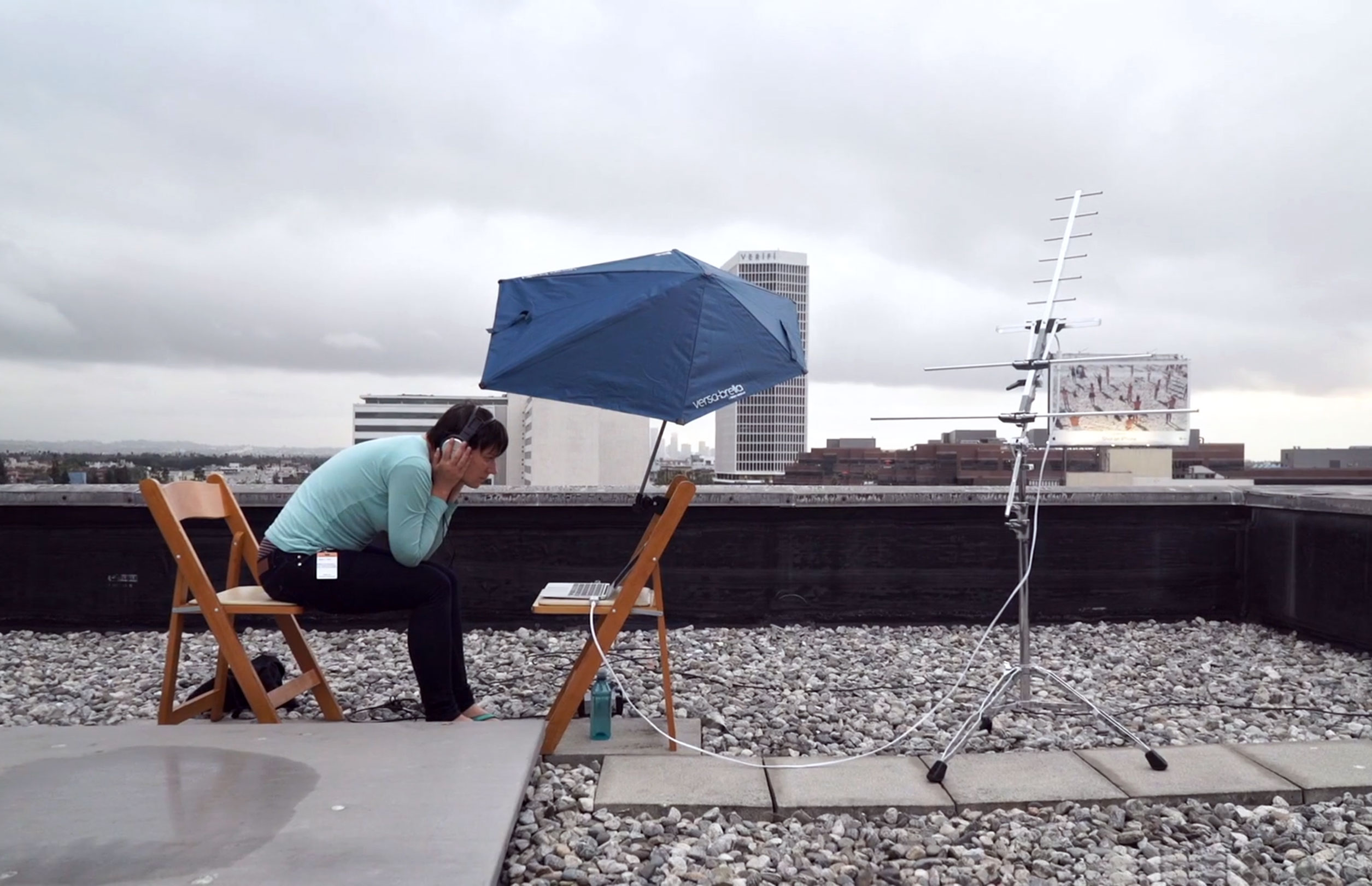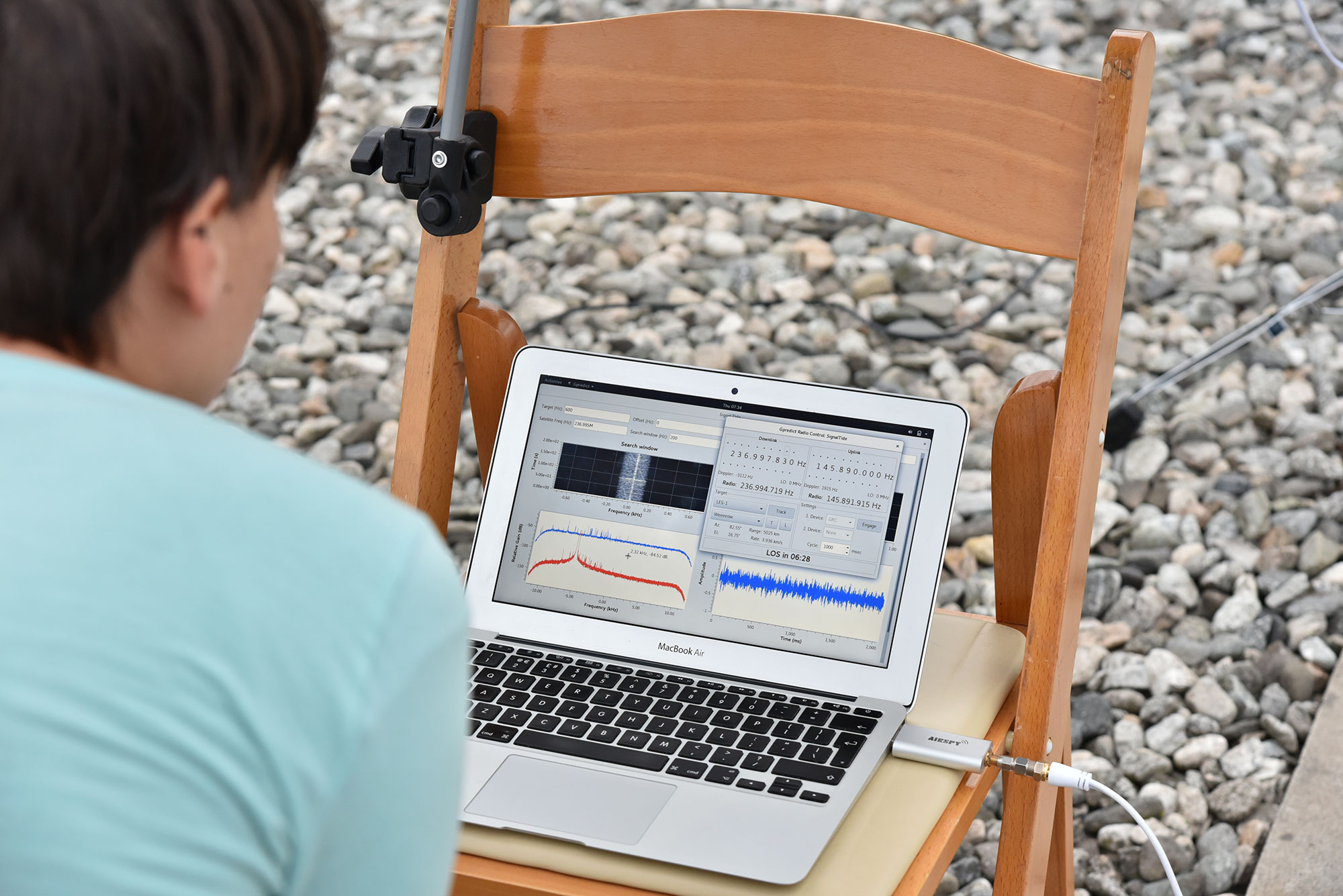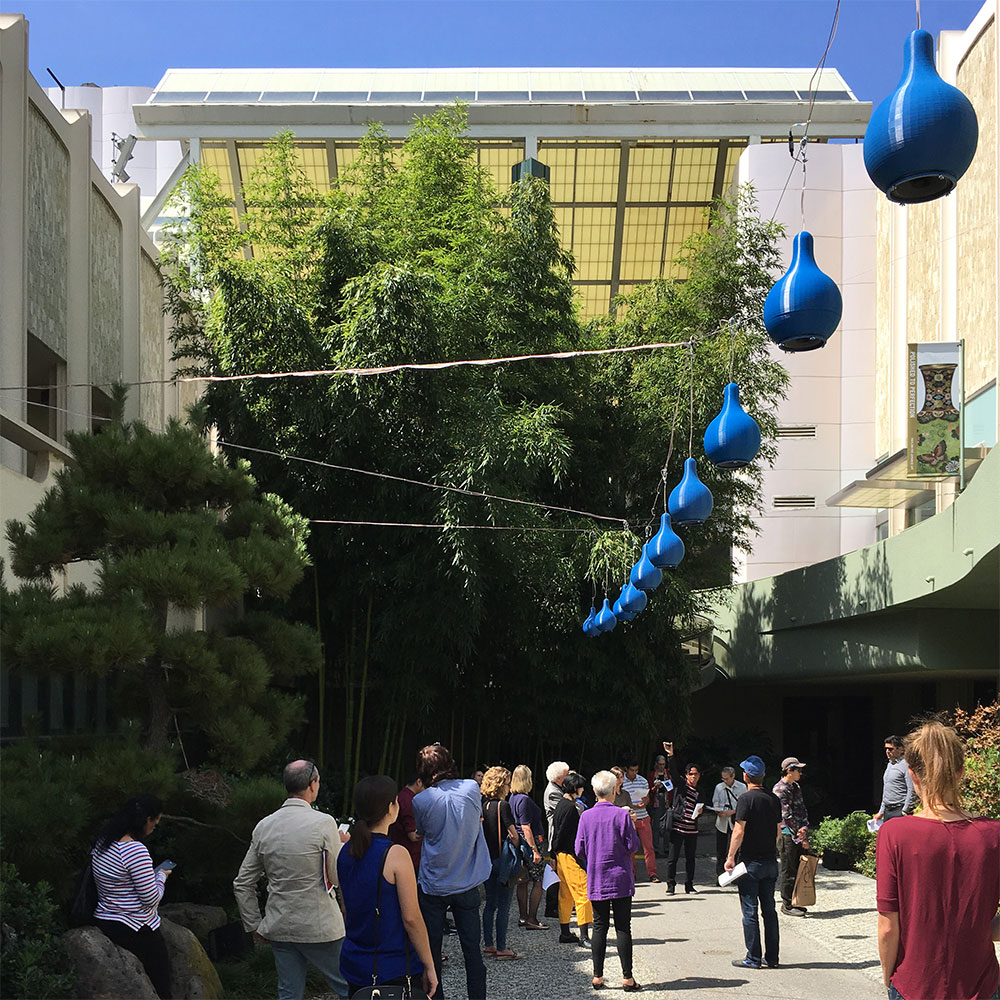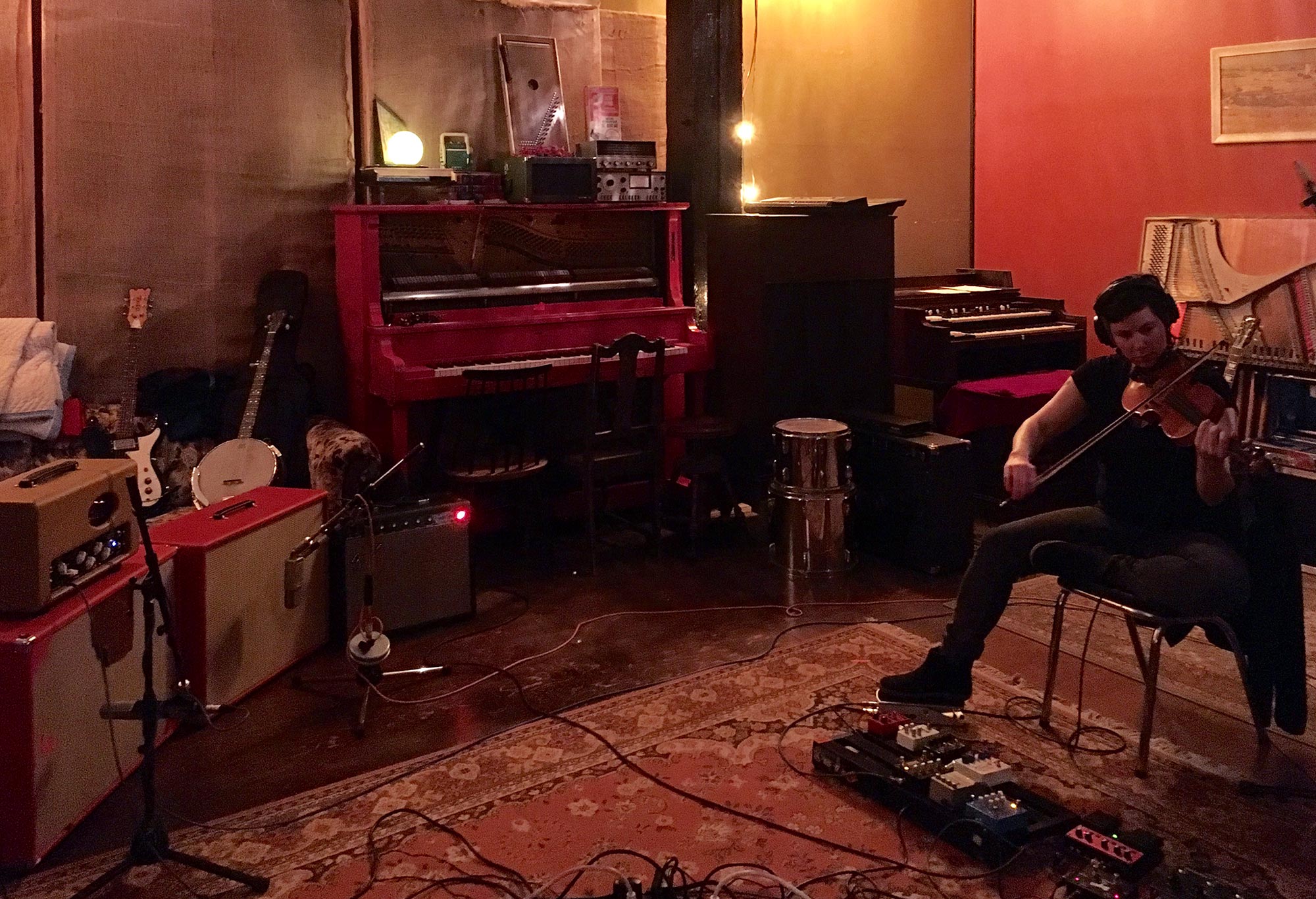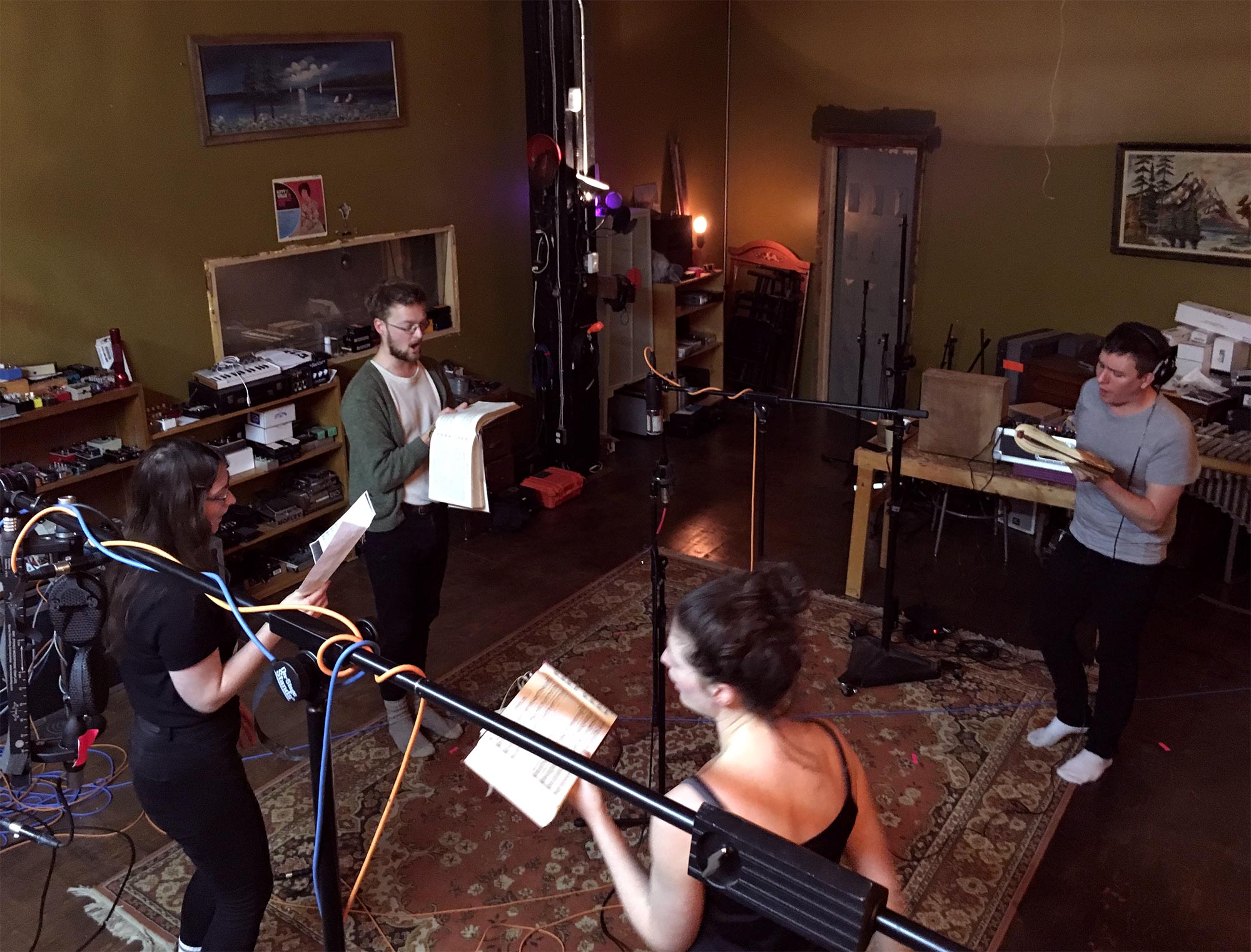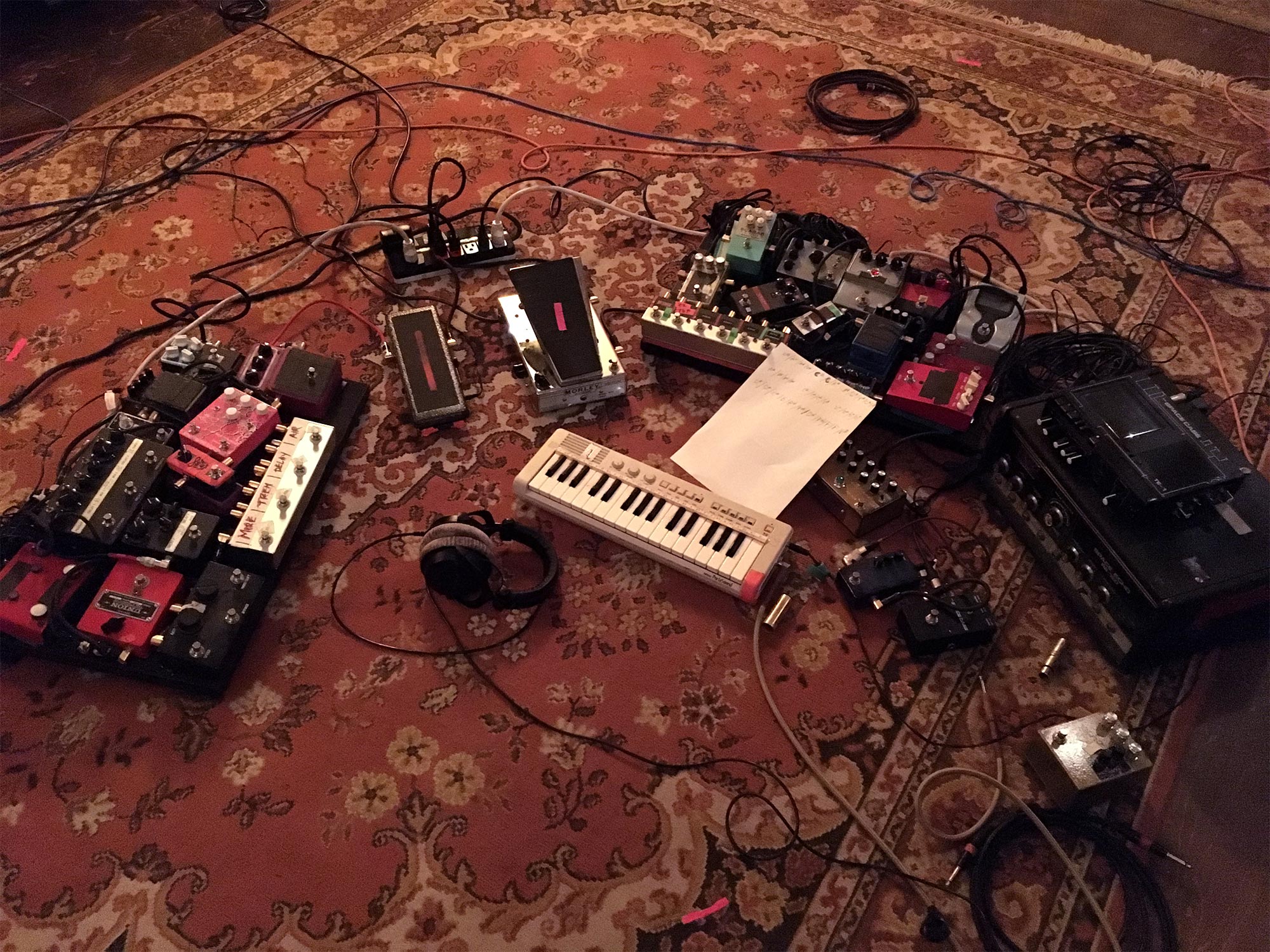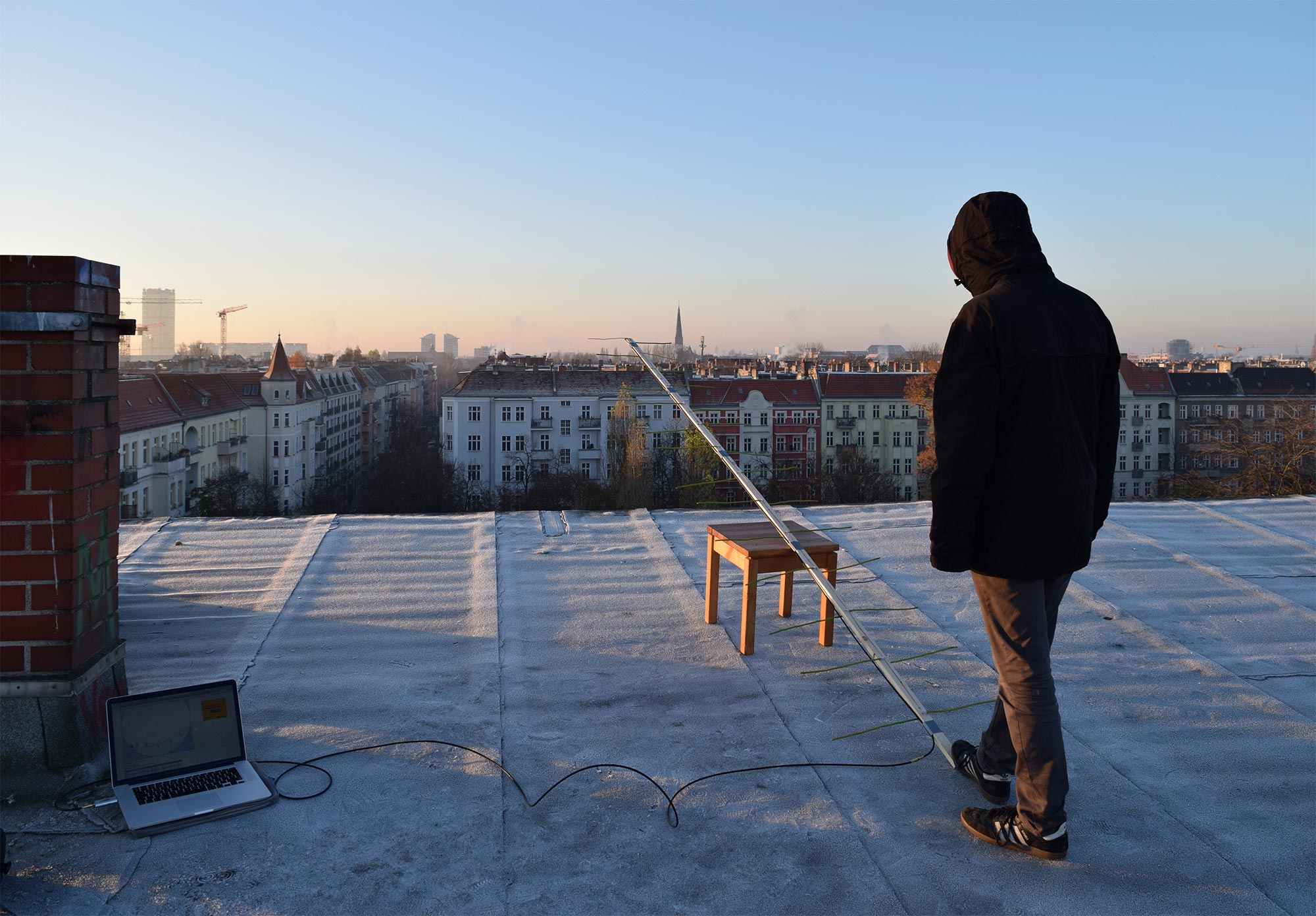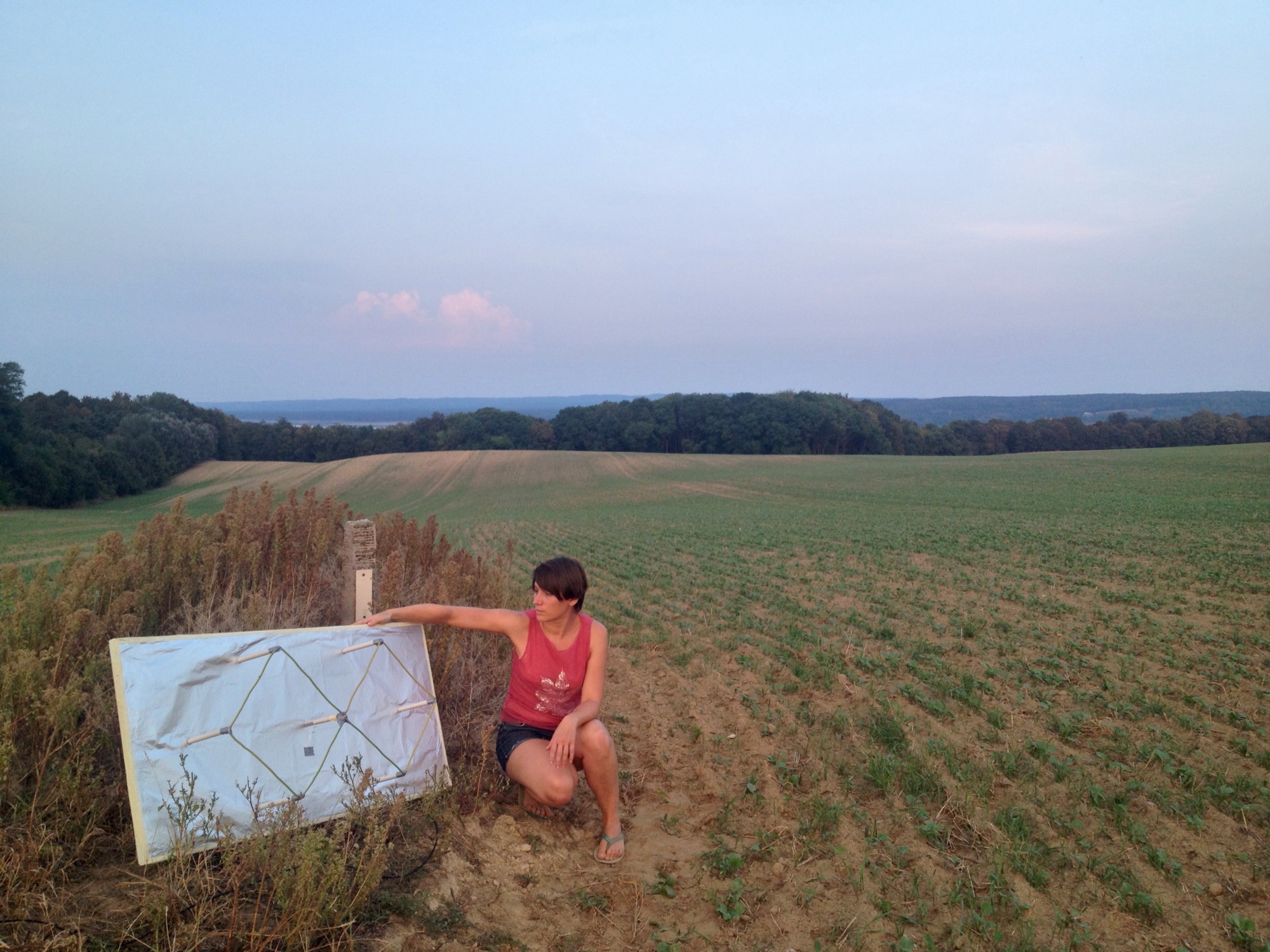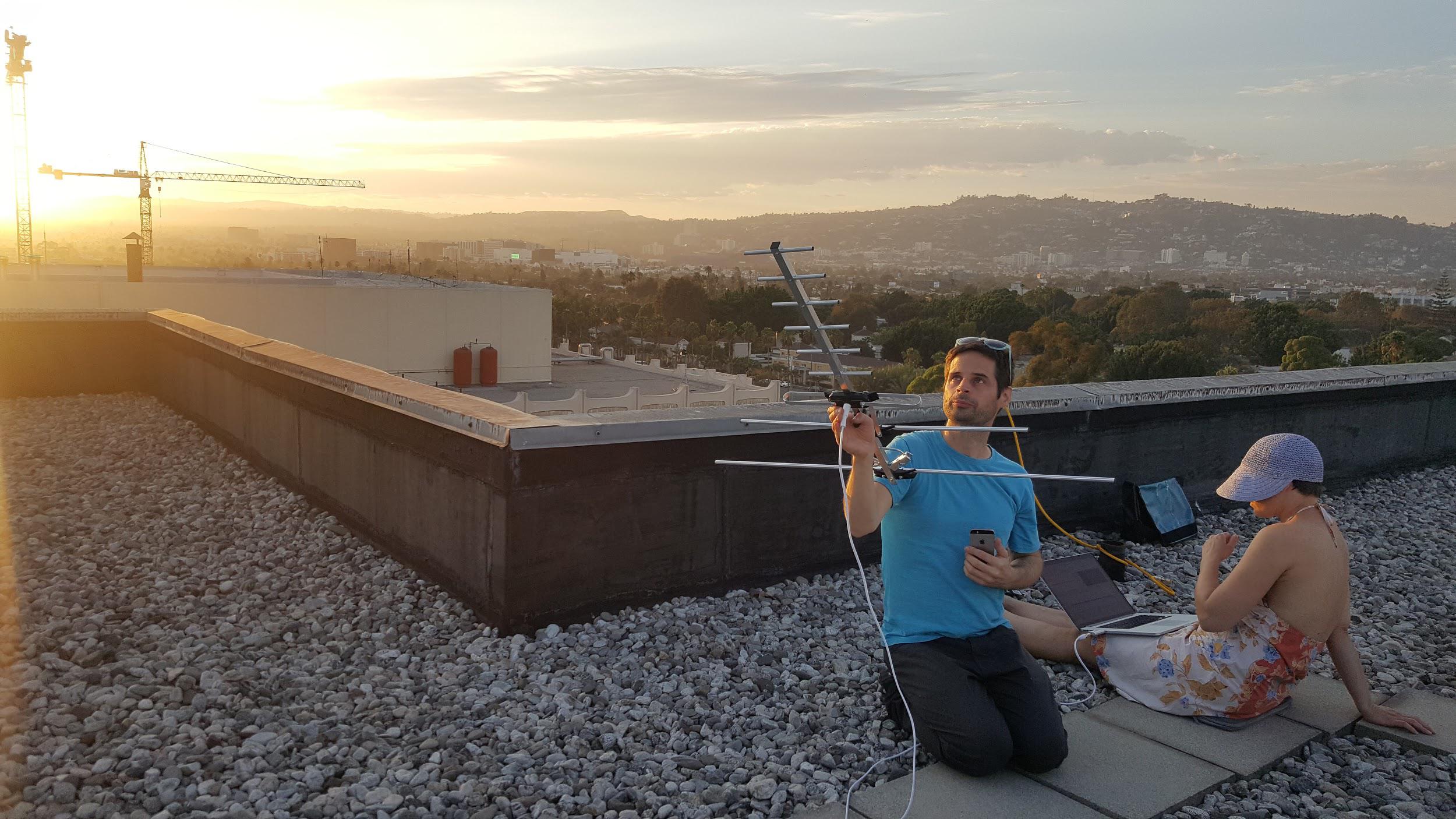Signal Tide
Signal Tide is a sound and extraterrestrial radio installation. It combines real-time signals from an abandoned satellite, currently orbiting the earth (the LES-1, launched in 1965) with unique music and sound.
Signal Tide was initially presented at Los Angeles County Museum of Art, from September 21.–24., 2017. Research and development of the work was supported by the Art + Technology Lab at LACMA.
Full details
Excerpt from the signal of the LES-1 satellite, derived from I/Q data recorded in September 2016, in Lunow-Stolzenhagen, Germany. Screen recording shows waterfall spectrogram played back via Gqrx SDR.
Signal Tide combines audio, derived from the signal of the LES-1 satellite, with a generative sound accompaniment based on sacred harp singing melodies.The LES-1, manufactured in the early 1960s at MIT, in Boston, Massachusetts, was launched in 1965. It functioned for the following two years, but it then ceased to transmit signals in 1967, and was abandoned as cold-war-era space-junk. However, in 2013, signals from the LES-1 were unexpectedly received again, for the first time in 46 years. This resurrected spacecraft is still giving its ghostly signal, which can be received at 237mHz on any VHF antenna. The satellite is now also seemingly tumbling slowly around its own axis every few seconds, as it orbits the earth — this means that it gives an unstable but steady signal, with distinctly-perceivable gaps caused by this tumbling action.Signal Tide combines audio, derived from the live feed of the satellite’s signal, with a musical ‘answering’ signal, in real time, as the satellite passes overhead above the site of the installation. The LES-1, an artificial moon and a relic of a different era, pulls an earthbound tide of sound toward it, in a fleeting accompaniment, as it passes overhead on its looping extraterrestrial pilgrimage.
Music
The music for Signal Tide has been specifically written and recorded for use in this work. The sound played in the work is generative, and so never repeats in the same way — thus each pass of the satellite has its own unique accompaniment. The recordings include contributions from David Bryant and Sophie Trudeau of Godspeed You! Black Emperor, Drew Barnet, James Hamilton, a choir of Montréal sacred harp singers, and others — a full list is provided below.This generative musical accompaniment is derived from melodies used in sacred harp hymns and anthems. Sacred harp singing is a distinct tradition of American and Canadian shape-note choral music, which has a centuries-long history as Christian sacred music, with distinct ‘southern’ and ‘northern’ schools. One of the areas where the ‘northern’ tradition is particularly strong is in Boston and the wider New England area. The LES-1 satellite was designed and built in Boston, at Lincoln Laboratory in MIT, and so Signal Tide serenades the satellite with music that is part of the folk traditions of a place which is, in an anthropomorphised sense, its home and point of origin.
Each pass of the LES-1 satellite (during daylight hours and within antenna range of the site of the installation) lasts approximately 35 to 40 minutes. Signal Tide, when it is running, is active only during these passes. During these times, a row of overhead speakers plays the audio derived from the live signal of the satellite. Simultaneously, a series of ground-level speakers plays a unique, generative accompaniment, accompanying the satellite as it passes overhead. The satellite then takes approximately three hours to circle the earth before returning, and so these times when the installation is active are approximately three hours apart from each other.
The lyrics of sacred harp songs often consider themes of ephemerality, hope, and transcendence. The metaphorical potential of these beautiful, haunting songs, as an accompaniment to the weary and lonely LES-1, has been an artistic point of departure in considering the musical elements of this work. The process of research for the work has been ongoing since mid-2016, and the majority of the music used in the work was recorded in The Pines recording studio, Montréal, in April 2017. The process through which the music is played and generatively combined is software-defined, using Substrate.
Participants and contributors:
- David Bryant
- Drew Barnet
- James Hamilton
- Sophie Trudeau
- Esther Wade, Patrick DeDauw, Xarah Dion, Philippe Doyle-Gosselin
- Collin Findlay
- Elena Horgan
- Tim Eriksen and Zoë Darrow
- Kata Kovács and Tom O’Doherty
Work on this project has also been assisted by singer, musician, and sacred harp scholar Tim Eriksen.
Research
The process of researching the work has been documented on our news page, which gives an overview of many of the technical steps that have been involved in developing the work. The project has also been profiled on LACMA’s Unframed blog.
The development of the work is deeply indebted to the assistance and collaboration of Kris Slyka. The development was assisted by Meharban Sobti, Lilian Haney, Jeremy Fields, Paul Weiss, Devin Williams, and Han Lin at SpaceX; Tom Spilker, Dan Goods, and Stephan Esterhuizen at NASA JPL; Bart O’Doherty; Scott Cutler at Southern Stars; and R. Kevin Nelson and Will Light.
Past news and updates about Signal Tide:
- August 26, 2020
- LES-1, Oreganoweg, August 2020 · From August 11. to 13., 2020, Datscha Radio in Berlin broadcast three days of radio experiments, interviews,... | More »
- May 29, 2020
- Signal Tide interview and audio, LACMA · The Los Angeles County Museum of Art has published a sound mix, Signal Tide — Two Passes, with an accompanying... | More »
- March 2, 2018
- Colaboradio interview · We were interviewed by Rosanna Lovell, for Colaboradio’s Berliner Runde programme (part of Pi-Radio Berlin) about... | More »
- September 20, 2017
- Signal Tide at LACMA · Signal Tide will be presented at the Los Angeles County Museum of Art from September 21. to 24. — LACMA’s... | More »
- April 20, 2017
- Post on Unframed · We contributed a post to LACMA’s Unframed blog about our Art+Technology Lab research project, Signal... | More »
- September 8, 2016
- September sounds · It’s been the coldest August in 25 years in Germany. Plenty of dreary grey clouds, intermittent showers, and... | More »
- August 20, 2016
- On the roof · As part of the research for a new work, we have made antennas to try to receive the signal from the LES-1 satellite.... | More »
- August 18, 2016
- Antenna 2: Heather · As part of the research for a new work, we have built one antenna, and named it Peter. Our second one will be named... | More »
- August 12, 2016
- Antenna 1: Peter · For our new work, we are going to be building two different antennas (specifically, a bi-quad antenna and a logarithmic... | More »
- July 20, 2016
- Beginnings · We are trying to figure out how to get a reliable signal from the LES-1, a now-defunct satellite launched in 1965. This... | More »
